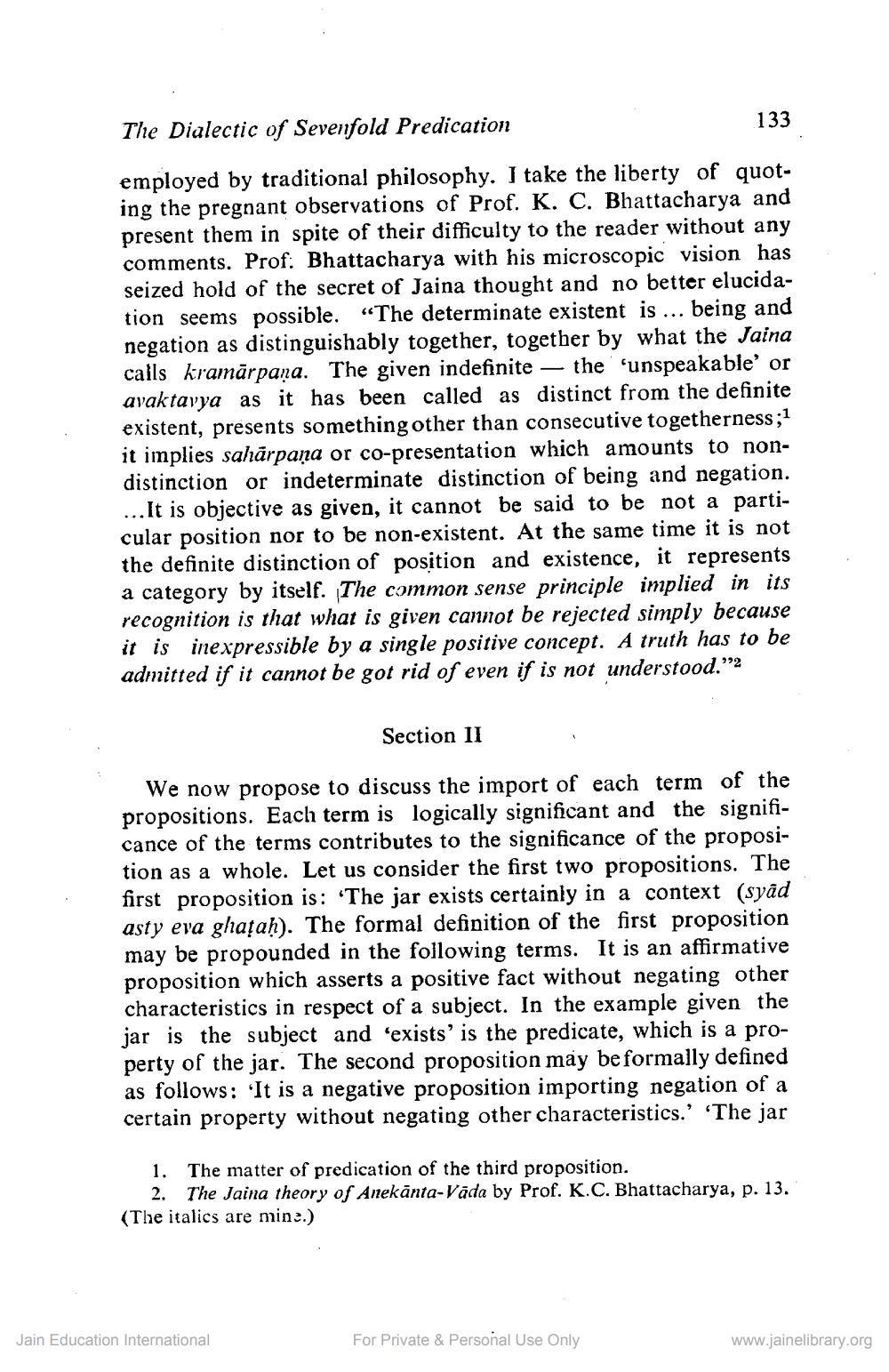________________
The Dialectic of Sevenfold Predication
133
employed by traditional philosophy. I take the liberty of quoting the pregnant observations of Prof. K. C. Bhattacharya and present them in spite of their difficulty to the reader without any comments. Prof. Bhattacharya with his microscopic vision has seized hold of the secret of Jaina thought and no better elucidation seems possible. “The determinate existent is ... being and negation as distinguishably together, together by what the Jaina calls kramārpana. The given indefinite — the 'unspeakable' or avaktavya as it has been called as distinct from the definite existent, presents something other than consecutive togetherness;1 it implies sahārpana or co-presentation which amounts to nondistinction or indeterminate distinction of being and negation. ... It is objective as given, it cannot be said to be not a particular position nor to be non-existent. At the same time it is not the definite distinction of position and existence, it represents a category by itself. The common sense principle implied in its recognition is that what is given cannot be rejected simply because it is inexpressible by a single positive concept. A truth has to be admitted if it cannot be got rid of even if is not understood.”2
Section II
We now propose to discuss the import of each term of the propositions. Each term is logically significant and the significance of the terms contributes to the significance of the proposition as a whole. Let us consider the first two propositions. The first proposition is: 'The jar exists certainly in a context (syâd asty eva ghațaḥ). The formal definition of the first proposition may be propounded in the following terms. It is an affirmative proposition which asserts a positive fact without negating other characteristics in respect of a subject. In the example given the jar is the subject and 'exists' is the predicate, which is a property of the jar. The second proposition may be formally defined as follows: 'It is a negative proposition importing negation of a certain property without negating other characteristics.' 'The jar
1. The matter of predication of the third proposition.
2. The Jaina theory of Anekānta-Vada by Prof. K.C. Bhattacharya, p. 13. (The italics are mine.)
Jain Education International
For Private & Personal Use Only
www.jainelibrary.org




